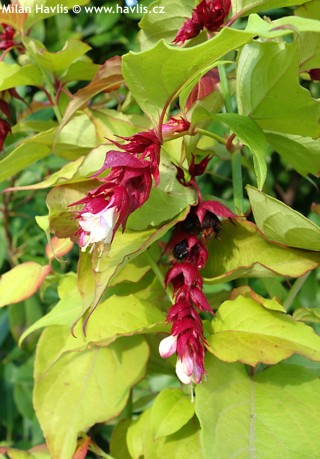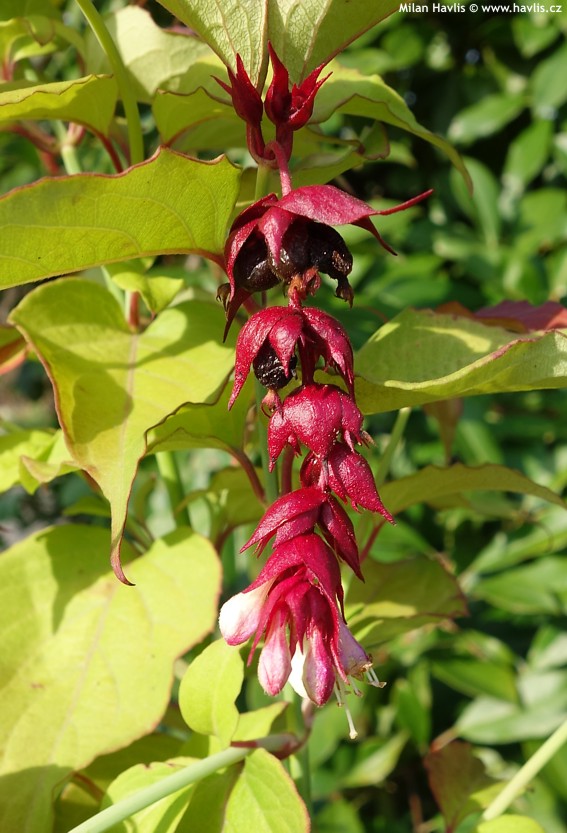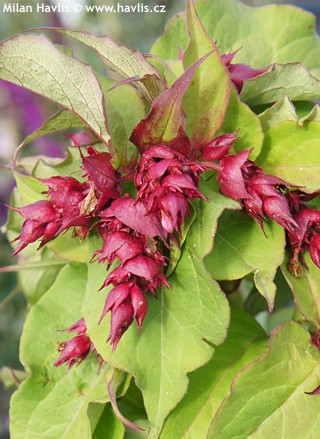Leycesteria formosa 'Notbruce' GOLDEN LANTERNS Himalayan honeysuckle
size/type
medium-sized shrub,medium-sized shrub
usual height
1-2m
usual width
1-2m
leaves
deciduous broadleaf
colour of leaves
flowers
less showy but noticeable
colour of flowers
blooming time
June-September
location
full to partial sun
USDA zone (lowest)
7 (down to -23°C)
winter protection
for zone 5+6

for zone 7

categorized
Leycesteria
Himalayan honeysuckle is a native Asian plant that comes from mountain woodlands of west China and Himalayas. In European gardens it is grown for its ornamental inflorescence composed of claret-red bracts hanging above small, campanulate, almost white blooms. Purple Rain is a variety with richer purple-red colour of these bracts. It forms pendent spikes or racemes that are produced continuously from June until September and the later they are borne the longer they get. Flowers are followed by ornamental, spherical berries that are almost black and glossy, non edible, though some say they taste sweet.Description of the plant:
GOLDEN LANTERNS is a variety of Himalayan honeysuckle with golden yellow and light lime green leaves. They are narrowly heart-shaped and emerge rich crimson red to burgundy red, just like leaf stalks. Stems are light green. Flowers are produced freely as the plant continues growing throughout the season i.e. from June until September, even October in the autumn is sunny and warm. It is a fast growing plant that is usually killed to the ground in zone 6 winters and comes back from the roots, making about 1.5m long stems by August. Deciduous leaves turn bright burgundy red in autumn, keeping yellow undertones. Himalayan honeysuckle likes a sunny spot with well-drained but evenly moist, fertile soil. It will grow in partial shade, too, but will have fewer flowers of not as beautiful colour. It needs good mulching in zone 6 and should be cut back to 10-15 cm above ground level in mid spring if damaged by frost. Live and healthy stems (usually in zones 7 and 8) can be left unpruned or trimmed lightly in order to achieve a framework of mature wood of maximum 1m. It is root hardy to about -23°C (zone 6) and wood hardy to about -17°C (zone 7).
Last update 14-10-2016
QUICK PRICE OVERVIEW
CURRENTLY SOLD OUT
WANT TO TRY A SIMILAR PLANT?

















